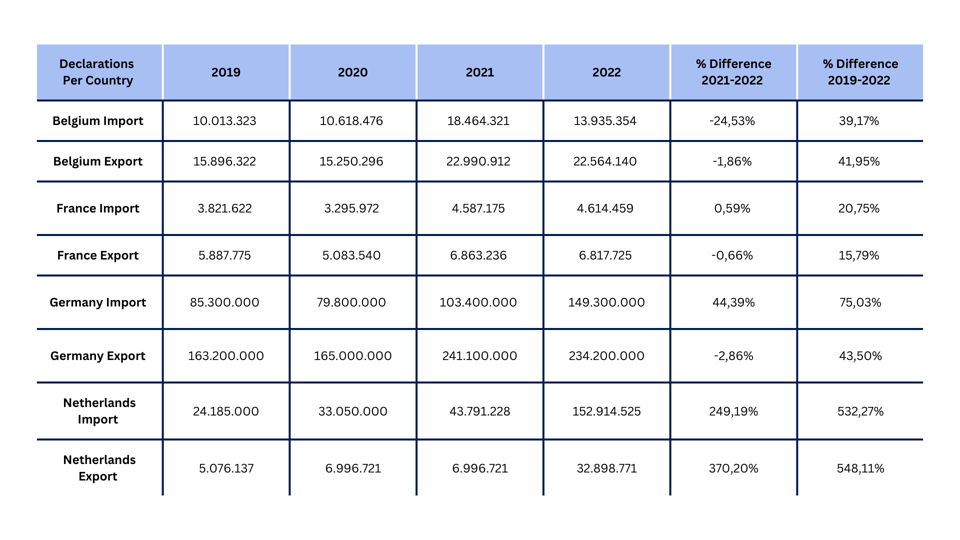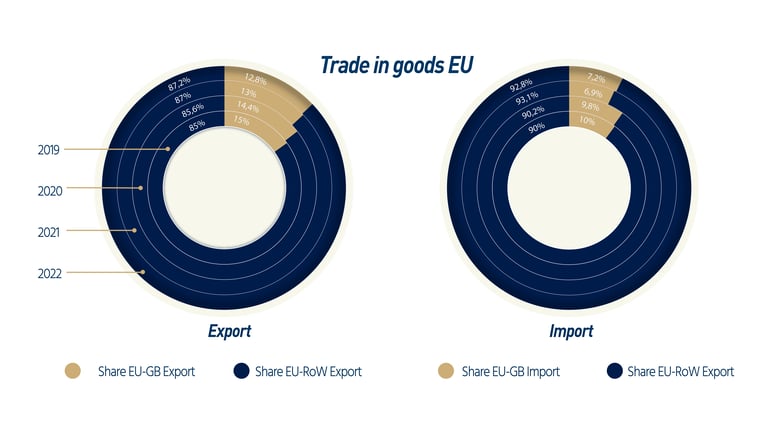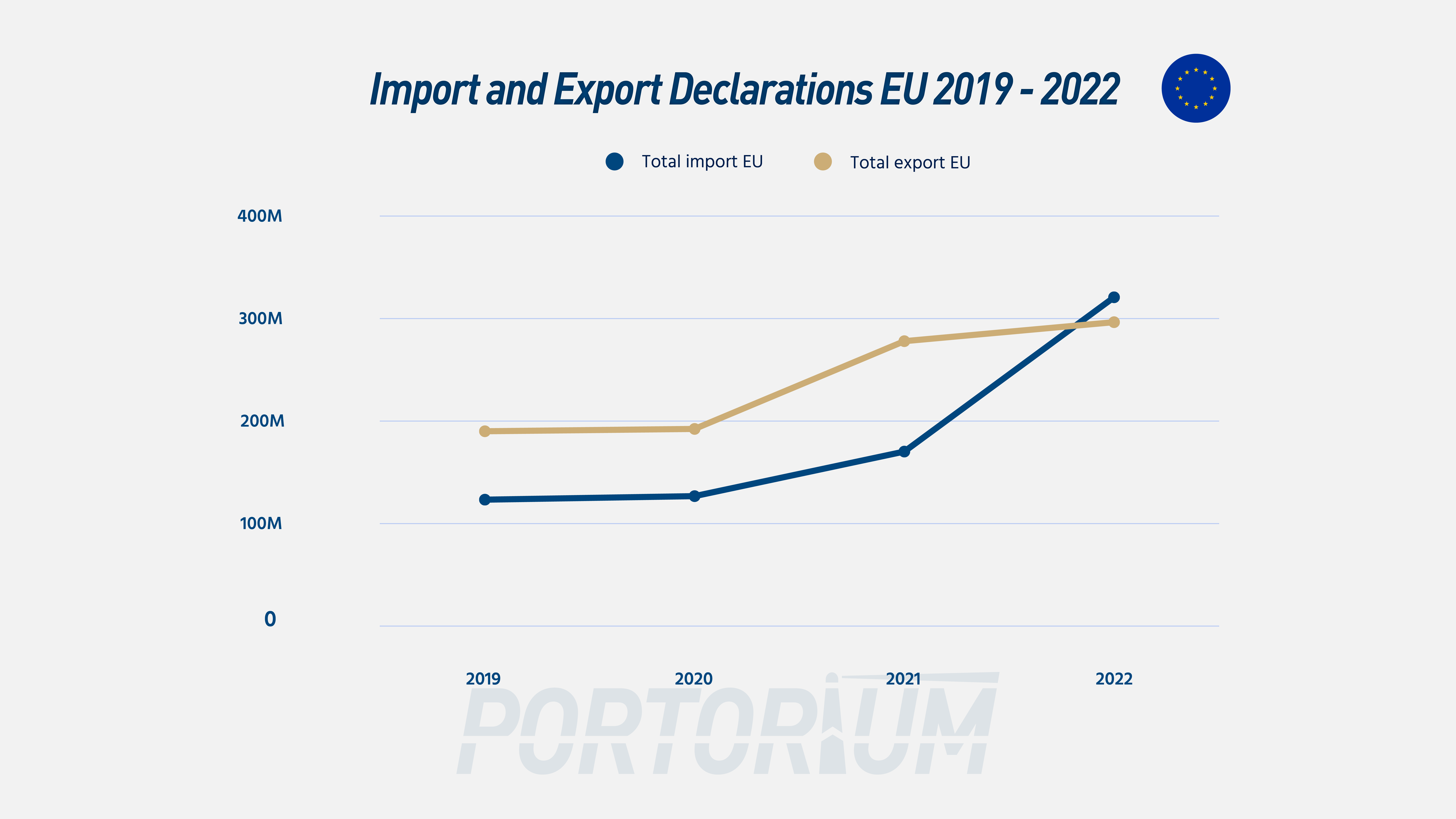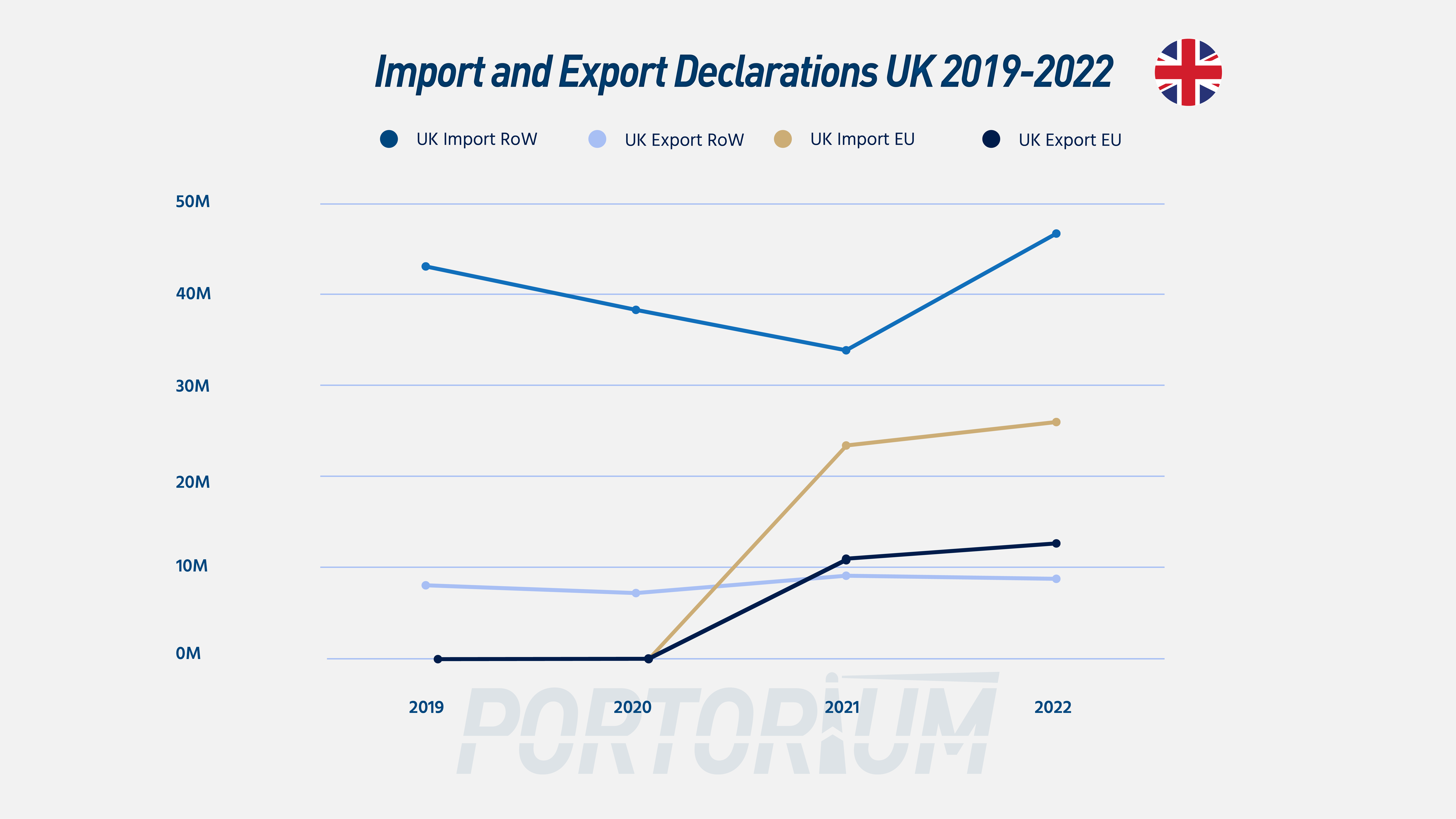Headlines announce the EU and the UK signing new trade deals and achieving record numbers in trade. But what is the real situation now? In this blog, we compare the declaration numbers before and after Brexit, as well as how these declarations relate to changes in trade volume.
Declaration figures
Customs declarations are a good indicator of a country’s import and export activity. One would expect that a higher number indicates that there is more economic activity and a better economic situation. But is this always the case, or are there hidden factors that may inflate these numbers?
Every year, national customs authorities publish their declaration numbers and share them with the WCO, which then publishes them in their annual report.1 To compare pre and post Brexit, we examined the declaration numbers of countries heavily engaged in trade with the UK over the past four years to identify differences.
Table 1 As expected, numbers of import and export declarations rose after Brexit, but the increase looks disproportionally high. As you can see from Table 1, the declaration volume for both Netherlands imports and exports surged by over 500% and those of Germany up to 75%, whereas in Table 2 below, you will notice that declarations between the EU to the UK only add up to about 38 million declarations a year.4
As expected, numbers of import and export declarations rose after Brexit, but the increase looks disproportionally high. As you can see from Table 1, the declaration volume for both Netherlands imports and exports surged by over 500% and those of Germany up to 75%, whereas in Table 2 below, you will notice that declarations between the EU to the UK only add up to about 38 million declarations a year.4
Table 2 Non-Brexit influences
Non-Brexit influences
While part of the increased declarations can be attributed to the requirement for declaration filing when moving goods between the UK and the EU, it's more likely that the majority of the increase stems from another cause.
Removing customs duties on low-value consignments
A closer look reveals that the difference between 2020 and 2021 is significant. Despite a global crisis, the numbers skyrocketed due to the introduction of the H7 dataset for e-commerce transactions. Consignments with a value lower than 150 euros could be declared without having to pay customs duties on them.2 The increase in import declarations in the EU is a likely consequence of that.
War in Ukraine
Another noteworthy observation is that the impact of the war in Ukraine is reflected in declaration numbers. In Belgium, we observe a decrease in declaration numbers compared to 2021, which correlates with a slight slowdown in goods movement through Belgian harbors compared to 2021.3
How has Brexit impacted international trade?
Brexit’s impact on trade cannot be answered solely by examining declaration numbers, as these can be inflated due to other influencing factors, such as those mentioned above. To determine Brexit’s impact on international trade, we analysed the absolute and relative value of the EU's trade in goods with the rest of the world (RoW), with a focus on the UK.
Overall, trade statistics indicate that both before and after Brexit, the EU's import and export values with both RoW and the UK increased in absolute terms. However, this does not include the fact that there was significant inflation on the price of goods in 2022.
An interesting insight comes from the graph below, which illustrates the percentage share of EU-UK imports and exports in relation to absolute value. The data indicates that post-Brexit, the share of goods' value moving between the UK and EU slightly decreased, implying that Brexit did impact goods trade to some extent. However, this impact was not extremely substantial.

Conclusion
To answer the question, “did Brexit have an impact on trade?”, we think it did, but only to a limited extent. While part of the increased declarations can be attributed to the requirement for declaration filing when moving goods between the UK and the EU, the majority of the increase stems from other causes.
Although the volume of goods traded between the UK and EU might have slightly decreased, it hasn't had a highly negative impact on either economy. Goods from the EU are still entering the UK, many of which are subject to a 0% duty rate and only face additional bureaucratic procedures at the border.
Furthermore, in terms of absolute value, trade has remained relatively stable. The demographic landscape of the UK hasn't changed significantly, and the demand for specific goods will likely remain constant. Until new trade partners emerge or domestic production ramps up, certain goods will need to continue flowing between the UK and EU to meet the population's needs.
To stay current on market changes and insights, subscribe to our mailing list.
1 WCO Annual Reports
2 European Commission Taxation and Customs Union, "Customs formalities for low value consignments"
3 Port of Antwerp Bruges
4 GOV.UK "Customs declaration volumes for international trade in goods in 2022"




Leave a Comment